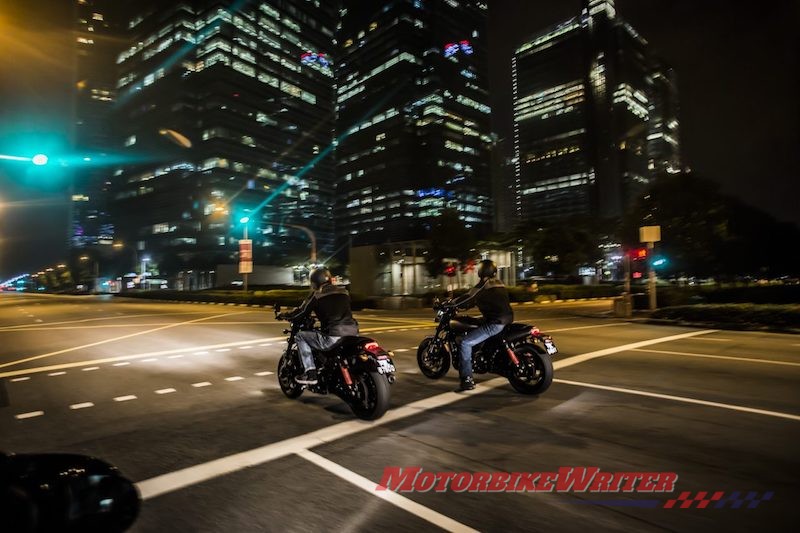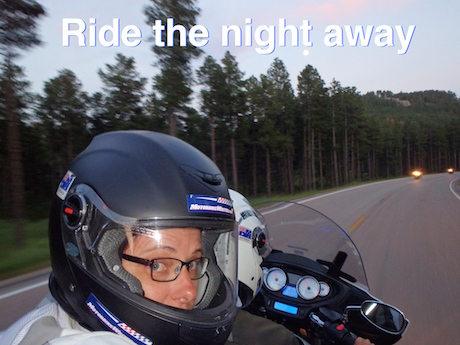Fatal motorcycle crashes increase 5% during a full moon and 32% during the annual supermoon, according to research published in the British Medical Journal (December 11, 2017) .
Riders should be particularly wary in 2020 as there will be three super moons: March 9 (a “Super Worm Moon”), April 7 (a “Super Pink Moon”) and May 7 (a “Super Flower Moon”).
The statistical study titled, The full moon and motorcycle related mortality: population based double control study, includes data from Australia, the United States, the United Kingdom and Canada.
Read our tips on becoming a better night rider.
Warning of risks
While the researchers confirm the observational data cannot prove any firm conclusions, they warn of the risks of seemingly minor distractions, urging constant attention while riding or driving.
Study co-author Eldar Shafir says the study “adds to the literature that small distractions can sometimes lead to life-altering consequences”. Eldar is a Professor in Behavioral Science and Public Policy and professor of psychology and public affairs at the Woodrow Wilson School of Public and International Affairs.
Lead author Donald Redelmeier, professor in the Department of Medicine at the University of Toronto says a full moon could be a distraction for a rider.
“Glancing at the full moon takes the motorcyclist’s gaze off the road, which could result in a loss of control,” he says.
“The average ride on a motorcycle is more dangerous than a drunk driver with no seatbelt traveling the same distance. Because of this, we recommend riders and drivers orient their attention, ignore distractions, and continuously monitor their dynamic surroundings.”
Moon draws attention
The authors claim that people’s attention may be naturally drawn to a full moon, potentially contributing to fatal motorcycle crashes.
To test their hypothesis, they analysed data from the official United States registry of motor vehicle crashes from 1975 to 2014, during which time 494 full moons and 65 supermoons appeared. They calculated the number of fatal crashes on full moon nights compared with nights with a quarter moon (one week before and after the full moon).
The researchers defined a full moon as the one night each month when the entire facing surface of the moon was illuminated. They also included the rare occasions in which two full moons appeared in the same month. They studied the 16 hours of night from 4pm to 8am over 40 consecutive years.
They found 4994 fatal crashes occurred on the nights with a full moon, which is equal to 9.10 crashes per night. In contrast, a total of 8.64 fatal crashes per night occurred on nights without a full moon.
Fatalities increased further under a supermoon, amounting to a total of 703 fatal crashes, or 10.82 fatal crashes per night. This means that for every two full moon nights, there was one additional fatal crash. Under the supermoon, this increased to two additional deaths.
Overall, there was a total increase of 226 additional fatal crashes on nights with a full moon during the entire study period.
“While these figures might seem low on the surface, they are quite significant,” Donald says. “All of these deaths could have been prevented completely by small differences in behaviour.”
Typical rider
The typical motorcyclist was a middle-aged man riding a street bike with a large engine in a rural location, who experienced a head-on front impact. Less than half were wearing a helmet. Seventy-three percent of the crashes occurred during the hours before midnight, and 27% after midnight.
The researchers repeated their analyses in the United Kingdom, Canada and Australia and found similar results.

The researchers highlight the limitations of the study. For example, other distractions and traffic hazards were not taken into account, and neither were factors including the prevailing weather or moon visibility. And while they used large datasets, like any routinely collected data, errors could have been made when the data was entered.
Nevertheless, the study’s findings highlight the importance of safe, careful and attentive driving, under all conditions.
“We encourage motorcycle riders to wear a helmet, activate headlights, scan the road surface and be wary of other vehicles,” Donald says.
“The best approach to safe driving is reducing as many distractions as possible and keeping alert behind the wheel.
“That’s good advice for all the rest of us who don’t ride motorcycles, too,” Eldar says.
The project was supported by the Canada Research Chairs Program, the Canadian Institute for Advanced Research, the Canadian Institutes of Health Research, and the Ontario Ministry of Transportation.




